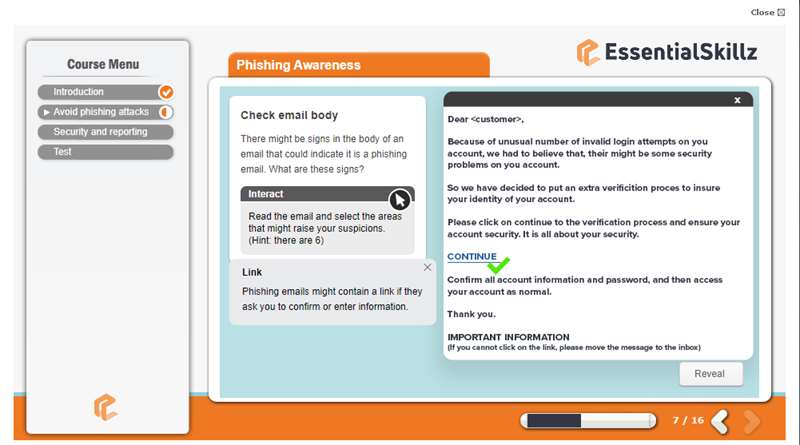Introduction
The Phishing Awareness eLearning course introduces and the explains the cybersecurity threat posed by social engineering and phishing. It puts in context the vast scale of the threat and the damage it can cause to both individuals, organisations across all sectors of the economy and society. It describes the varying levels of sophistication in phishing attacks. The different types of malware are explained as well.
According to the cybersecurity company, WEBOOT, Phishing has displaced malware globally as the number 1 attack that IT decision makers believe their organisation will be most vulnerable to in 2018. This makes the need to train employees to spot scams and take the right action quickly if they have suspicions more important than ever.
What is a Phishing Attack
A phishing attack, or a phishing scam, is when criminals send an email pretending to be someone (e.g. the Finance Director of your organisation) in order to extract sensitive information from the target.
In essence, the perpetrator attempts to elicit fear, curiosity, and/or a sense of urgency out of the target, so that when the target is prompted to open an attachment or fill in their sensitive information, like a username, password, or credit card number, they are likely to comply. These techniques are called Social Engineering. This Phishing Awareness eLearning course looks at the different types of scams and how to avoid falling victim to them.
What does the Phishing Awareness elearning course cover
- To describe what phishing is and why it is essential that you remain vigilant to the threat at all times.
- To outline how to recognise if an email, a website, social media, a phone call and text message is a phishing attack.
- To highlight how to prevent phishing attacks and what to do should you fall victim to one.
Target Audience:
The Phishing Awareness eLearning course is aimed at all employees who use a computer, laptop, tablet or smartphone as part of their work duties.





